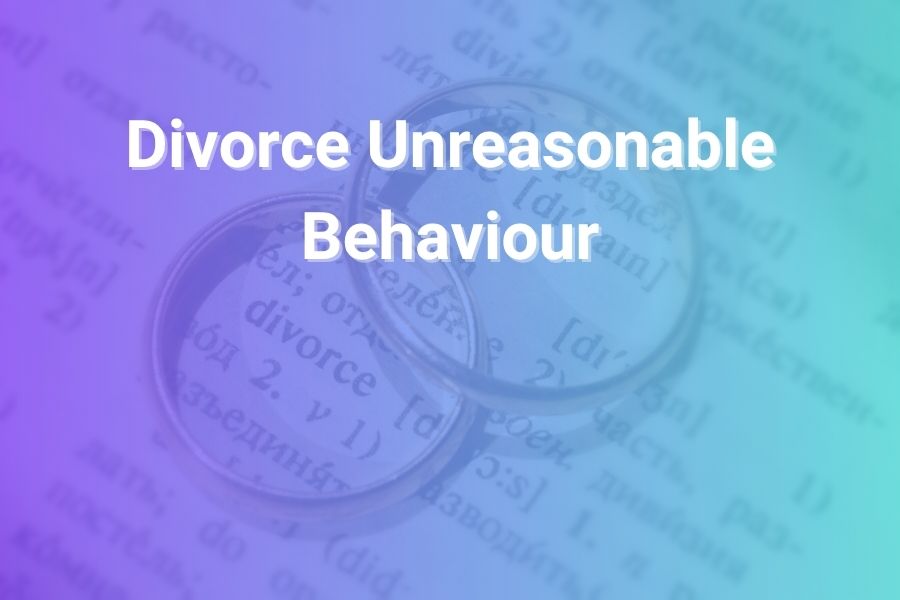When a marriage breaks down and a fault‐based divorce is on the table, one of the most common grounds invoked is unreasonable behavior.
In the U.S., though many states favor no‐fault divorce laws, unreasonable behavior still plays a role in states that allow fault claims or influence negotiations in settlement talks.
In this article, you will learn what constitutes unreasonable behavior, how courts evaluate it, how to present evidence, strategic risks, and tips for proving or defending against such allegations.
What Is Unreasonable Behavior in Divorce?
Unreasonable behavior refers to conduct by one spouse that makes it intolerable for the other to continue living with them.
It covers a wide range of acts—emotional, verbal, financial, or physical—that breach basic standards of respect, dignity, and decency in marriage. It goes beyond normal marital conflict; the behavior must be more than occasional disagreements or personality clashes. Courts look for patterns or serious incidents that show the marriage has broken down irretrievably.
Why Use Unreasonable Behavior as Ground?
In states permitting fault divorce, unreasonable behavior offers legal leverage. It can:
- Strengthen your negotiating position in property dividing or alimony decisions.
- Affect spousal support terms, perhaps favorably if misconduct is severe.
- Allow you to file sooner in jurisdictions with separation waiting periods.
- Influence perceptions of credibility in court.
Even in states that don’t require fault, accusations of unreasonable behavior may become part of settlement or custody disputes.
Common Types of Unreasonable Behavior
Unreasonable behavior manifests in many ways. Some examples courts accept include:
- Verbal insults, constant criticism, humiliation
- Excessive jealousy, controlling behavior, stalking
- Financial abuse— hiding income, draining assets
- Emotional abuse— isolation, gaslighting, threats
- Substance abuse that causes disruption
- Refusal of sexual intimacy (in extreme cases)
- Sudden or unexplained infidelity (in states allowing it)
- Neglect of household or child responsibilities
- Aggression, intimidation, even non-violent threats
Not all instances count. Courts reject trivial complaints or subjective irritation. The alleged conduct must exceed toleration and show marital breakdown.
Legal Standard & Court Evaluation
Courts evaluate unreasonable behavior by asking whether a “reasonable person” could be expected to live with that conduct. They consider:
- Gravity, frequency, and duration of the conduct
- Evidence quality and consistency
- Effect on the other spouse’s mental and emotional well-being
- Context: stress, financial strain, children
Judges often prefer objective benchmarks over mere claims. They beware exaggerations or invented allegations. Proof is essential.
Strategies for Planning Your Case
Focus on building a coherent narrative supported by evidence. Key steps:
- Document incidents contemporaneously
Keep a journal of dates, times, what was said or done, witnesses present. - Gather supporting evidence
Emails, text messages, voice mails, financial statements, police reports, therapy notes. - Secure witness statements
Friends, family, neighbors, colleagues—anyone who observed relevant behavior. - Highlight escalation and pattern
One incident might be dismissed. Multiple or worsening events carry more weight. - Show emotional or psychological impact
Medical or counseling records can illustrate harm you suffered. - Be truthful and selective
Don’t present every frustration. Focus on acts that cross the line.
Defending Against Claims of Unreasonable Behavior
If you face such allegations, your defense should:
- Challenge the credibility and consistency of complainant’s account
- Show context: stress, mental health, external pressures
- Provide counter-evidence or witnesses
- Show you attempted to resolve conflicts or sought counseling
- Argue that behavior was reasonable under circumstances or mutual
A vigorous defense can weaken the fault claim’s influence on other issues.
Practical Challenges & Risks
Claiming or defending unreasonable behavior involves pitfalls:
- Costs & delays: Fault litigation tends to be more protracted and expensive.
- Emotional toll: Digging into personal conflicts opens wounds.
- Backlash risk: The other spouse may retaliate with counterclaims.
- Burden of proof: The filer must prove behavior, not the other way around.
- Irrelevance in some states: Many states only allow no‐fault divorce, so unreasonable behavior might have limited legal effect.
Before choosing this path, weigh the benefits against these risks.
State Variations & Stats
In states like New York, North Carolina, or Utah that permit fault divorces, unreasonable behavior remains a viable ground. In contrast, states like California and Florida only allow no‐fault divorce, so the conduct won’t affect whether a divorce is granted—though it might still influence custody or support. According to recent data, over 90 percent of U.S. divorces now proceed on a no-fault basis, making fault claims rare and often symbolic in many jurisdictions.
Best Practices When Proceeding
- Consult an attorney experienced in your state’s law
- Focus on resolution: often the threat of a fault claim is leverage, not the fight itself
- Be strategic—introduce only behavior that truly affects outcome
- Prepare emotionally—reviewing misconduct is draining
- Negotiate smartly—use your claim to encourage settlement, not prolong war
When Unreasonable Behavior Claims Help Most
Your claim has the highest impact when:
- The misbehavior is clear, documented, and serious
- There’s a significant contest over support or custody
- You need leverage in negotiations
- You file in a fault‐permitting state
If misbehavior is weak or mostly subjective, it may be better to pursue a no-fault route or keep the focus on financial and parenting issues.
Conclusion
Unreasonable behavior offers a path to assert fault in a divorce. When properly framed and evidenced, it can shift negotiation dynamics and influence financial or custodial outcomes. But it carries emotional, financial, and legal risks—especially in jurisdictions that focus on no-fault divorce. Carefully weigh your state’s rules, the strength of your evidence, and your goals before deciding. Use your lawyer as guide, not crusader—and tailor the claim only where it truly matters.







